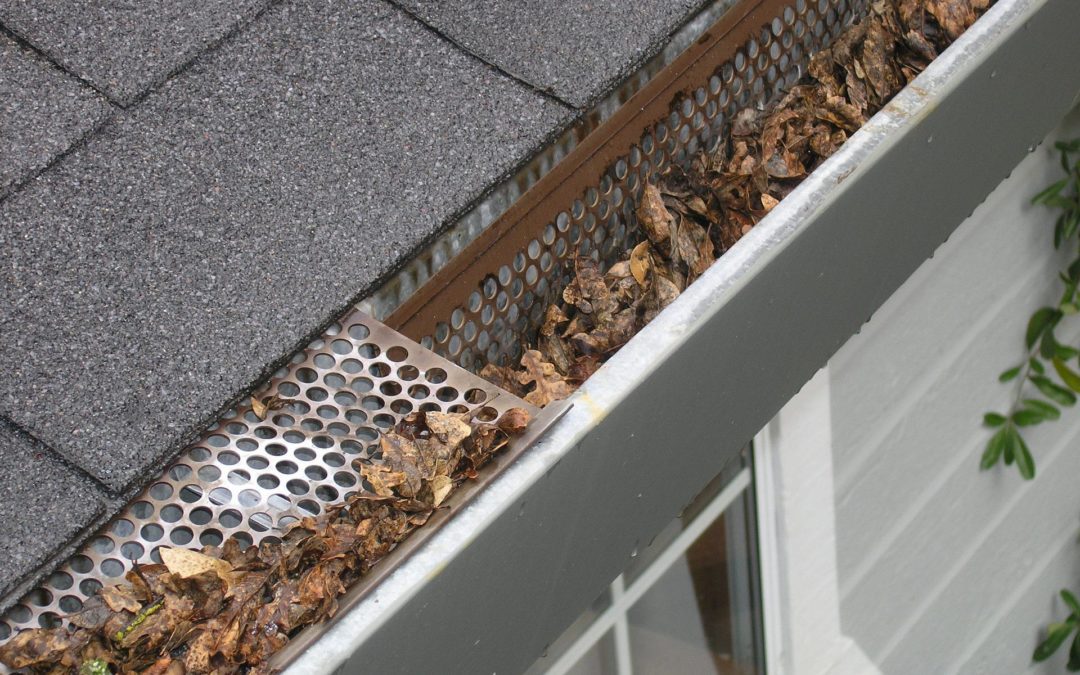Have you noticed a build-up of leaves, moss or twigs in your property’s guttering? You may enefit from installing gutter guards to keep the water flowing freely.
Here’s all you need to know about them, including the big question: do gutter guards actually work?
What are gutter guards?
Gutter are panels (usually made from metal, mesh, or plastic) that sit within your gutters to catch leaves and debris whilst letting water trickle through. They can be helpful in keeping your guttering free from items that might clog them.
Other benefits include:
- Overflow prevention
- Pest deterrence
- Reduced mould and mildew growth
You may find that certain types of gutter guards work better for your property than others. Here are three of the most popular varieties:
Brush guards
As you might expect, these gutter guards are comprised of bristles that prevent leaves, twigs, and other debris falling into our gutters.
Made from a stainless steel wire core, brush guard bristles are coated in a UV-resistant outer layer, to ensure safeguarding from extreme temperatures. They are easy to install and fit most UK guttering. They’re also maintenance-free, and can last up to 10 years.
Grid guards
This gutter guard is a firm and rigid grid that clips together to fit the length of guttering before sitting horizontally within to protect water flow from debris.
Although relatively easy to install, these may need to be cut to size, and are unable to fit directly around bends. You can fit them yourself, however, you may benefit from calling a professional who can trim them to size quickly and effectively.
These gutter guards are effective when it comes to catching larger pieces of debris, such as leaves. However, if your property is situated under a tree tat drops needles or helicopter seeds, these may still slip through.
Mesh guards
These are a low-cost way to keep guttering clear from leaves and debris. Because the mesh has small holes, they can catch smaller pieces of debris.
They are also easy to install, as you can trim them to size using scissors.
How to prepare your guttering for gutter guards
To get the most out of your gutter guards and make sure they work efficiently, there are a couple of tasks that can ensure your guttering is prepared for installation.
Gutter cleaning
Summer is the ideal time to get to work on clearing any blockages in your home’s guttering and facias.
Cleaning them before fitting gutter guards will make sure you’re not crushing eny existing debris into the gutters.
Water test
A simple water test will ensure that your guttering system is working well and also show if any leaks are present. To carry out the test, fill the guttering with water from a hosepipe, and make sure the guttering is flowing correctly down the downpipe and into the drains below.
If you spot any leaks, get them repaired before installing gutter guards to prevent issues down the line.
Gutter guards: do they work?
Many people have a lot of success with gutter guards. If you live in an area with a lot of trees, gutter guards can prevent your guttering from getting clogged by leaves, twigs, seeds, and other debris.
However, it’s important to find the material that works best for you. Brush guards are a versatile choice for most standard guttering. However, if you have several bends in your gutters or pipes, you could benefit from mesh guards that you can trim to size.
It’s also worth noting that no gutter guards last forever – get yours checked regularly for best results.
Gutter repairs and services in Cambridge
For gutter repairs in Cambridge, don’t hesitate to contact ELT. Our guttering experts are here to help and no job is too big or too small! Get in touch with our friendly team today.


Recent Comments